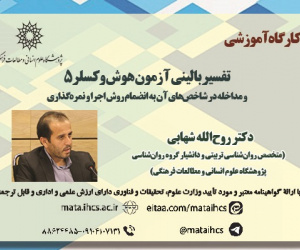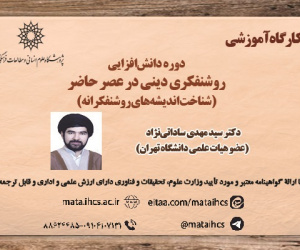طراحی الگوی بازی وارسازی در سرویس های ویدئو به در خواست کودک و نوجوان (مقاله علمی وزارت علوم)
درجه علمی: نشریه علمی (وزارت علوم)
آرشیو
چکیده
پژوهش حاضر با هدف طراحی الگوی بازی وارسازی ( گیمیفیکیشن) برای سکوهای ویدئو درخواستی/ ویدئو به درخواست (VOD) ویژه کودکان و نوجوانان انجام شده است تا چالش های موجود در جذب و درگیرسازی این قشر را برطرف کند. نبود الگوی مدون گیمیفیکیشن در ایران باعث اجرای ناکارآمد این راهبردها در سکوهای ویدئو درخواستی شده و همین امر رقابت پذیری این سرویس ها را تهدید می کند. هدف این پژوهش ارائه الگویی است که با افزایش تعامل کاربران، به وفاداری بیشتر و تجربه کاربری بهینه تری بیانجامد.روش تحقیق این پژوهش گراندد تئوری بوده است، زیرا این روش به پژوهشگران این امکان را می دهد که از طریق تحلیل عمیق داده های کیفی، به شناسایی و استخراج الگوها و مؤلفه های کلیدی بپردازند. انتخاب این روش به ویژه به دلیل نبود نظریه های موجود در زمینه گیمیفیکیشن در سرویس های ویدئو به درخواست و نیاز به انجام آزمون فرضیات شکل گرفت. در این راستا، داده ها از طریق مصاحبه های عمیق و نیمه ساختاریافته با ۱۷ متخصص گردآوری شده است. داده های بدست آمده توسط این مصاحبه ها پس از گذراندن روند کدگذاری باز و بسته، تبدیل به مقولات شده و مقوله محوری از این داده ها شکل گرفت.یافته ها نشان داد که طراحی گیمیفیکیشن کارآمد و مسئولانه به عنوان مقوله محوری، شامل سه مؤلفه کلیدی است: پلتفرمی کارآمد و جذاب برای کودکان و نوجوانان، پلتفرمی امن و مطمئن، و همگام با استراتژی های مدیریتی جهانی. به کارگیری این مؤلفه ها می تواند نیازهای صنعت سرویس های ویدئو به درخواست ایران را به ویژه در حوزه کودکان و نوجوانان برطرف کند و منجر به تجربه کاربری بهینه، افزایش تعامل و وفاداری کاربران شود. اجرای گیمیفیکیشن بر اساس این الگوی پیشنهادی در سناریوهای تعامل محور، می تواند به افزایش وفاداری و تعامل مخاطبان کودک و نوجوان بیانجامد و رقابت پذیری سرویس های ویدئو درخواستی را بهبود بخشد.Gamification model design in video on demand (VOD) services for kids and teenagers
The current research was conducted with the aim of designing a gamification model for video-on-demand/video-on-demand (VOD) platforms for children and teenagers in order to solve the challenges in attracting and engaging this group. The lack of a documented model of gamification in Iran has caused ineffective implementation of these strategies in video-on-demand platforms, and this threatens the competitiveness of these services. The aim of this research is to provide a model that leads to more loyalty and an optimal user experience by increasing user interaction.The research method of this research was grounded theory, because this method allows researchers to identify and extract key patterns and components through deep analysis of qualitative data. The choice of this method was formed especially due to the lack of existing theories in the field of gamification in video-on-demand services and the need to test hypotheses. In this regard, data has been collected through in-depth and semi-structured interviews with 17 experts. After going through the process of open and closed coding, the data obtained by these interviews became categories and a central category was formed from these data.The findings showed that efficient and responsible gamification design as a central category includes three key components: an efficient and attractive platform for children and teenagers, a safe and secure platform, and in sync with global management strategies. The use of these components can solve the needs of Iran's video-on-demand services industry, especially in the field of children and teenagers, and lead to an optimal user experience, increasing user interaction and loyalty. The implementation of gamification based on this proposed model in interaction-oriented scenarios can increase the loyalty and interaction of children and teenagers and improve the competitiveness of video-on-demand services.







